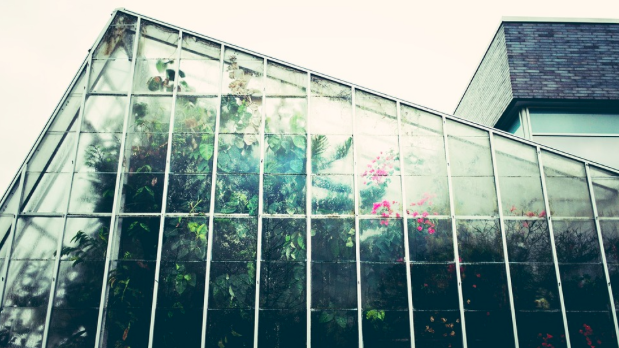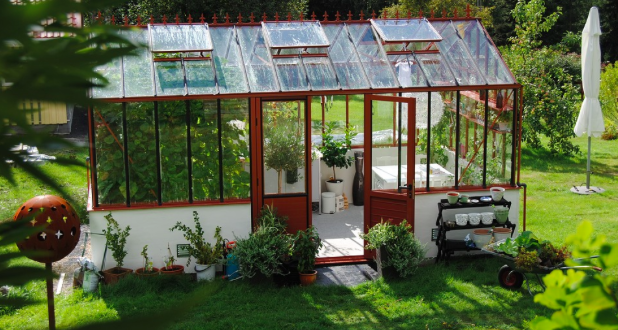A greenhouse can provide a beautiful retreat.
A little oasis of calm sitting in the backyard, growing food and plants. Nurturing a greenhouse is a great hobby that will keep on giving for years to come.
But where do you start if you’ve never owned one?
In this article, we’ll take a look at the basics of choosing a greenhouse, setting one up and growing plants. We’ll also provide links to some great free resources we’ve found for those who want to explore further.
Why Own A Greenhouse?
Look at any serious garden and you’ll likely spot a greenhouse.
Greenhouses are essential for shielding delicate crops from the excesses of temperature and weather. Depending on your location in New Zealand, you can typically grow crops year round in a greenhouse.
Greenhouses also extend the growing season. Even as the summer ends, the tomatoes in a greenhouse will be going strong for a little while yet. Strawberries pop out a little early and your flowers can be given a firm head start, sitting in their pots in the sheltered warmth.
A greenhouse can save you money by providing out-of-season plants and crops at a fraction of the cost of buying them in a store.
The Basics Of Setting Up A Greenhouse For New Zealand Conditions
Before you buy a greenhouse, the most important decision you’ll need to make is where to put it.
Do you want the greenhouse to be seen? Some people want it hidden, whilst others turn it into a garden feature. Keep in mind that greenhouses are typically a magnet for your visitors, so guests will likely make a beeline for it, regardless!
Direction is not important for greenhouses. They do need a lot of light, so keep your greenhouse away from trees and areas of the house that might create a lot of shade. Generally, the sunniest winter sun spot is a great location for a greenhouse. If you’re nurturing young plants, then consider where late summer and early spring light hits your garden.
Measure the site for your greenhouse. If you mark the area out with string you’ll get a good idea of a size that makes sense.
Greenhouse plants use a lot of water, so consider using runoff from your gutters if a water supply is difficult to access.
Wooden Frame Or Steel?
There was a time when the materials of a glass house made a big difference.

Wooden houses had a nice look and were flexible in terms of size and shape, but needed constant repair and treatment of the wood to prevent it from rotting. Metal houses tended to be used by commercial growers, but could heat up and cool down very quickly, meaning there was less margin for error when housing delicate plants.
These days, it doesn’t really matter what format your choose and is very much a case of personal preference. Polycarbonate greenhouses tend to be quite popular as they are largely maintenance free and let in slightly less light than glass, which protects plants from the harsh sun.
You’ll also want to consider headroom if you’re tall!
Low maintenance, long-lasting options that will readily survive the heat and cold extremes of the New Zealand climate are the main considerations, so talk to your local garden shop before purchase to compare options.
Power Up
If you want to get really serious, consider piping water and electricity underground from the house. Some gardeners like to propagate using controlled heating. These heated propagators can be thermostatically controlled and raise the temperature inside by approximately 10° above ambient temperature. This can also keep the greenhouse frost free.
Any electrical and water supply needs to be installed by a qualified electrician and plumber, so consider these in your costs.
The Internal Layout
A removable set of shelves and modular fittings offer a great deal of flexibility. Good ventilation is a must for temperature control, especially during summer. The more vents, the better, and some greenhouses come with automatic vents for when you’re away.
The heat of mid summer can kill plants in a greenhouse, so controlling not just temperature but shade is a must. You can apply shading paint, or use curtains. Of course, you could purchase a polycarbonate greenhouse which are usually opaque.
What Can You Grow In A Greenhouse?
Now the real fun begins!
People tend to fill their greenhouses with plants that are difficult to grow outdoors, or are limited due to the change in seasons.
Basil and other herbs thrive in greenhouses. As do tomatoes, peppers and cucumbers. You can often grow them from seed. They like a temperature of around 12-29°C.
You could also try growing exotic or ornamental plants. Geraniums are popular, as are ferns. If you control temperature carefully, orchids can be successfully grown, too.
Cool season crops like lettuce, broccoli, peas and carrots are great choices for unheated greenhouses, or greenhouses that are in shady areas.
Really, you’re only limited by your imagination. Start with the easy plants, build up your knowledge and soon you’ll be wishing you had bought a bigger greenhouse.
Further Tips And Reading
Water in the mornings when it is cool and the sun is indirect. This will prevent the plants from being burned. Water low down at the soil level which will help reduce the risk of fungal or bacterial outbreak.
You need to keep pests under control. They still get in! Not only that, you may be giving some bugs a cosy place for the winter. These can spread back to your outdoor garden in greater numbers, so be sure to look into adequate pest control.
Keep the greenhouse well ventilated. Good airflow is essential, especially on very hot days.
Whitefly traps are great for controlling bugs. These are sticky surfaces that attract the bugs, and keep them away from your plants. Be sure to repair any broken glass or torn plastic. Remove all crop remains and weeds.
Obviously, we can’t cover all aspects of greenhouse growing in one article, but hopefully, we’ve whetted your appetite!
Related Reading:
- Greenhouse Growing – a very comprehensive free guide to greenhouse growing.
- Greenhouse gardening 101 – a beginners guide to greenhouse growing
- What To Grow In A Greenhouse In Winter – some ideas for winter planting











Join the Discussion
Type out your comment here:
You must be logged in to post a comment.